Nothing spoils a well-kept lawn more than a weed invasion.
But before you act to stop its spread, it’s a good idea to find out what it is.
Different weed species are best dealt with in different ways. So identification is important.
If you’ve come across some lawn weeds with little white flowers, and you’re wondering what they are, I think I can help.
Lawn Weeds With Little White Flowers
These are some of the most common lawn weeds with small white flowers.
Let’s take a look at how to identify them and what you can do to control their spread.
White Clover (Trifolium repens)
One of the most common lawn weeds, white clover is a fast and aggressive growing broadleaf perennial.
It’s a creeping plant that spreads low to the ground. And everywhere a stem node makes contact it grows roots.
For identification, take a look at the tear-shaped leaflets that grow in sets of 3, and sometimes show a reddish stripe. And a close look at the spiky small white flowers should reveal a brownish-green center (1).
How do you control it?
Because of the speed of growth, control can be difficult. And it will take over your lawn if you leave it. So it’s best to deal with it as soon as you can.
Mowing your grass at a high level and making sure the lawn is healthy helps to keep white clover out. And you can prevent its growth in flower beds with a layer of mulch that stops seed germination.
If it’s already established, you have options:
If it’s just a small patch, you can pull the weed from the ground by hand. As it grows in clumps, it’s easy to get hold of and remove. But make sure you remove all of the roots.
You can also get selective broadleaf weed killers that can kill off larger areas of infestation without harming your grass or desirable plants nearby.
But it’s not easy to get rid of altogether. Seeds from the plant lie dormant in the soil for many years before sprouting. So keeping it under control often becomes a yearly job.
Hairy Bittercress (Cardamine hirsuta)
Bittercress is an annual weed that emerges in early spring, usually about February. You can identify this weed by its scalloped leaves arranged alternately around a central stem, and its little white flowers.
It thrives in wet soil. And it’s common to notice its growth after you’ve had a period of heavy rainfall.
It’s a good idea to eradicate bittercress from your lawn before the small white flowers produce seedpods. The seeds spread easily over quite a long distance. And it doesn’t take many plants to create an infestation the following spring.
One easy way to control bittercress is to mow your lawn regularly. This can be effective as long as you do it before it sets seed.
How do you get rid of it?
Pulling or digging the weed out can be effective. But like many other weeds, you have to make sure you don’t leave any of the roots behind in the soil.
If you’re facing a heavy infestation, it’s probably not practical to dig them all out. So you might have to use a post-emergent weed killer. Look for one that’s labeled for a bittercress and use it in the spring and fall.
English Daisy (Bellis perennis)
One of the most recognizable weeds to many, the English daisy is a wildflower that often grows in lawns, parks, fields, and pastures.
It’s a low-growing weed that spreads through thick rhizomes and seeds. And it often grows in patches on your turf.
The weed flowers in spring, producing white flowers with numerous white petals arranged around a center of yellow florets.
There are other types of daisies you might come across, and they all produce similar flowers.
But the English daisy can be further identified by the spatula-shaped leaves that grow from 1-2.5 inches long that are arranged in a rosette. The edges of the leaves are serrated and rounded at the top.
What’s the best method of control?
Some gardeners don’t mind leaving daisies as the pretty flowers add a bit of color to the garden when they bloom.
But if you’re looking to control them, the first step is to improve turf density through good lawn care practices.
Most post-emergent weed killers can kill any patches you want to completely eradicate.
Chickweed (Stellaria media)
This common annual broadleaf weed is well-known for spreading quickly across lawns if left unchecked.
Popular with chickens, hence the name, it’s an edible herb. And you can use the flowers and leaves in a salad after you’ve finished digging it up.
If you’re keeping an eye on your lawn, you’ll first notice chickweed growing during the winter. In early spring the plant flowers, with each small flower consisting of five, lobed white petals that look like ten (2).
The weed can grow about 8 inches tall. And the shoots mat together as it grows, sometimes extending up to 16 inches around the plant.
It reproduces by seeds and stolons, and once you allow it to spread across your lawn it’s difficult to get rid of.
What can you do to control it?
If you identify the weed early, then pulling it out by hand is a good control method. Just make sure you remove all of the roots. It’s possible for the shoots to re-root, so don’t leave the pulled weed lying in your garden.
Chickweed is a very common lawn weed, so most selective broadleaf weed killers will kill chickweed while leaving your grass unharmed.
And a pre-emergent herbicide applied in late summer or early fall is also useful to stop its seeds from germinating.
Wild Onion & Wild Garlic (Allium spp)
At first glance, you might mistake these closely related plants for tall grass. But they really stand out when you get close to them and notice the distinctive smell. This is particularly strong straight after you’ve mowed your grass.
They grow in early spring and late fall. With a dormant spell during the summer months. And because they grow very fast, they quickly tower above your turf grass, growing in obvious clumps.
When they bloom in late spring, you’ll see clusters of white flowers dangling from stalks.
Wild onion flowers by Sam Wilson
How do you control it?
The best way of preventing wild onion and wild garlic is to keep your lawn thick and healthy. This prevents it from becoming established.
But, they’re not difficult to remove by hand. It’s best not to pull them out as the weed’s bulb might break off, allowing it to grow back. Instead, use a trowel or spade to dig underneath and lift it out. Digging 6 inches deep is usually enough to do the job.
Post-emergent selective weed killers using herbicides such as dicamba, MCCP, and 2,4-D are another effective option.
Garlic Mustard (Alliaria petiolata)
This cool-season biennial herb is one of the most invasive lawn weeds with little white flowers. And it quickly spreads.
The plant grows about 3-4 feet tall when fully mature. You can identify the weed by its heart-shaped leaves with tooth-shaped edges. And when in bloom, the small white flowers have 4 petals.
There’s an easy way to confirm that it’s garlic mustard:
Try crushing a leaf between your fingers. It should give off a strong smell of garlic and onion.
It’s important to control garlic mustard if you find it growing in your lawn. Each plant produces hundreds of seeds allowing it to easily spread. And the seeds can survive in the soil for approximately 5 years. So it will keep appearing for years after you first clear an area.
How do you get rid of it?
You can hand-pull it if the infestation is small. It’s easier to do when the soil is damp. But it has a long taproot that can grow more plants. So try to do it while the weed is still small, before it flowers, removing as much root as you can. Keep an eye on pulled sites to check if it sprouts from broken root fragments.
For large infestations, use a lawn weed killer in the early spring prior to the plant flowering. Another good time is late fall.
Tall Fescue (Festuca arundinacea)
Tall fescue is a cool season grass that’s popular in some parts of the US.
But if you’re growing a different type of grass in your lawn, then you’ll probably consider this an invasive perennial weed if it suddenly appears.
Because it’s faster growing than most other lawn grasses, it’s very noticeable. And it grows in tall bunches, sometimes up to 20 cm in height.
Tall fescue emerges in early spring, and the plant reaches maturity by late summer. Between April and July, green-white flowers appear, and you’ll notice white seed heads from about May that are sometimes tinged with purple.
You can identify it by its broad, stiff leaves that grow about 4-5 inches long and 1 cm or wider. With edges that are rough to touch.
Is it easy to control?
If you allow it to become established, it can be very difficult to remove by hand. It has a thick root system that grows 2-3 ft. deep. And if you’re not successful in digging out all of the roots the plant quickly regrows.
Unlike broadleaf weeds, killing it with a herbicide can be tricky. Most herbicides that kill tall fescue will harm your turfgrass at the same time. So you need a selective weed killer that can specifically kill tall fescue grass while leaving other types of grass alone.
It’s also worth knowing that weed killer won’t be effective while the plant is dormant. So make sure it’s growing before you spray it.
Yarrow (Achillea millefolium)
Yarrow is also called soldier’s woundwort, old man’s pepper, and devil’s nettle. A perennial herb native to Asia and Europe, you can now find yarrow growing in many areas of the world, often as an ornamental plant.
But the weed spreads quickly through underground runners and can be hard to control once established, becoming invasive in some areas.
Yarrow grows 1-3 feet tall and has a long, slender stem lightly covered in hairs. When the weed first emerges from the ground, it develops a basal rosette of fern-like leaves that later grow alternate along the stem, reaching up to 5 inches long.
Yarrow blooms in late spring and early summer, developing clusters of tiny white flowers that attract pollinators such as butterflies and bees. Sometimes yarrow has yellow flowers or pink flowers.
The weed also spreads to new locations by seeds, and you’ll often see it growing in pastures, meadows, and along roadsides.
Yarrow has a history of use as a medicinal plant in Europe. It’s sometimes used in folk remedies as a diuretic, sedative, and to ease inflammation.
Is it easy to control?
Yarrow has thin fibrous roots that grow 20 cm deep and easily break if you try to pull the weed out by hand. The weed regrows from root fragments, but repeated cutting can inhibit its growth, and good lawn maintenance can prevent its spread.
White Dead Nettle (Lamium album)
Most people mistake white dead nettle for stinging nettle and fear a painful first contact. But despite having similar-looking serrated-edged leaves, white dead nettle doesn’t have the stinging hairs that cause a rash when you touch them.
White dead nettle is a common site in gardens and sometimes grows on patchy and poorly-maintained lawns. The weed spreads by seeds, stolons, and rhizomes.
White dead nettle weeds grow over 1 meter tall when left unchecked in optimal conditions. They have triangular leaves with rounded bases and are softly hairy.
From April to August, small clusters of white flowers grow in clusters among the leaves (3).
What can you do to control it?
Hand-pull or cut the weeds before they have a chance to flower or set seed. You can also hoe the weeds or use weedkiller.
Queen Anne’s Lace (Daucus carota)
Also called bishop’s lace and wild carrot, this pretty weed is recognizable by the cluster of tiny white flowers that grows at the end of a stiff central stem. Flowering in the summer and fall, Queen Anne’s lace grows best in full sun to partial shade and is known to invade poorly maintained lawns.
Queen Anne’s lace is a member of the carrot family (Apiaceae) and an ancestor of the cultivated carrot. The weed is sometimes mistaken to poison hemlock, another closely related plant, because of its similar flowers, but it’s not as poisonous. You can tell the difference by the hairy leaves and stems of Queen Anne’s lace, and the purple mottling on the poison hemlock stems.
Although most people will be okay, people with sensitive skin may develop irritation when touching this weed. But the blistering is not as bad as that caused by contact with another lookalike, giant hogweed, a poisonous plant known for its highly toxic sap.
As well as lawns, it’s also common to find this weed growing in fields, meadows, and along roadsides, spreading by seed into nearby locations.
How do you get rid of it?
You can control Queen Anne’s lace by hand pulling or mowing, but herbicides are the most effective method.
Hedge Parsley (Torilis arvensis)
TORILIS ARVENSIS BY ISIDRE BLANC, CC BY-SA 4.0, VIA WIKIMEDIA COMMONS
Hedge parsley is a common garden weed that can grow in a variety of conditions, growing in full sun and partial shade and a wide range of soil types.
You’ll often find hedge parsley growing in well-kept gardens and cultivated areas where it outgrows and outcompetes desirable plants.
Hedge parsley is a winter or spring annual weed. It grows in colonies that form large clumps and sends up round, slender stems that reach up to 2 feet tall. Fern-like leaves grow alternately from each stem, measuring 6 inches long and 4 inches wide. Each leaf is trifoliate with three leaflets and toothed. The stems and leaves have a coating of fine white hairs.
HEDGE PARSLEY BY LIESVANROMPAEY
Hedge parsley blooms in early to mid-summer, producing clusters of small white flowers for about a month before the burr-like seeds develop, covered in white bristles. As the burrs age, they turn brown.
How can I control it?
Pulling by hand or cultivation with a hoe is effective if you act before the weed sets seed. Pre-emergent herbicide applied at the correct time can prevent the seeds from sprouting the next year.
Procumbent Pearlwort (Sagina procumbens)
Pearlwort is a low-growing, mat-forming weed, typically reaching 2-4 inches in height. Its leaves are narrow and awn-like, with a thick cuticle, and its stems are thin and delicate.
Pearlwort flowers are small, with four white petals. The flowers grow at the ends of short stalks and have a pleasant, aromatic fragrance. The flowers usually bloom from May to September attracting pollinators, including bees and butterflies.
Pearlwort has a shallow root system and can spread quickly by sending out runners that form dense mats and root at the nodes. The plant also spreads by seeds. You’ll often find this weed in close-cut lawns, gardens, and other disturbed areas, thriving in plenty of sunlight and moisture.
SAGINA PROCUMBENS, IN WIKIPEDIA
Although pearlwort is an annoying weed for many, there are some gardeners who choose to plant it as a groundcover in rock gardens or as a filler between stepping stones.
How do you control it?
Controlling pearlwort can be challenging, as it spreads rapidly and regrows from small pieces of plant material. Hand-pulling can be effective for small infestations if you remove the slender taproot completely, but chemical herbicides may be necessary for large areas.
Mayweed Chamomile (Anthemis cotula)
Also called dog fennel and stinking chamomile, mayweed is a flowering, annual weed that you may have seen growing in your yard or garden. It’s actually a member of the sunflower family (Asteraceae), and it’s known for its strong and unpleasant odor.
Mayweed usually grows up to 2 feet tall, with a bushy and branched stem. The leaves are feathery, fern-like, and typically light green in color, with some short hairs. The flowers are small and daisy-like, with white petals and yellow centers (4). They bloom from May to September.
Mayweed has a deep central taproot, responsible for most of its growth, and an extensive network of fibrous roots that grow near the soil surface. It can also spread by seeds dispersed by the wind.
ANTHEMIS COTULA BY NY STATE IPM PROGRAM
You’ll often find mayweed in disturbed areas such as fields, pastures, and gardens. It prefers full sun and well-drained soil.
Mayweed chamomile is a medicinal weed with a history of use in traditional medicine. It’s sometimes used to treat a range of health problems including colds, fevers, rheumatism, and intestinal ailments.
Control advice:
To control mayweed, you can try to pull the weed by hand before the plant produces seeds. Alternatively, you can use a hoe or cultivator while gardening to loosen the soil and remove the plants. If you have an infestation, herbicides may be necessary to kill weeds.
References:
- Killing White Clover – https://www.gardeningknowhow.com/plant-problems/weeds/getting-rid-white-clover.htm
- Common Chickweed – https://www.wildfooduk.com/edible-wild-plants/common-chickweed/
- White Dead Nettle – https://www.plantlife.org.uk/uk/discover-wild-plants-nature/plant-fungi-species/white-dead-nettle
- Mayweed Chamomile – https://ipm.ucanr.edu/PMG/WEEDS/mayweed_chamomile.html


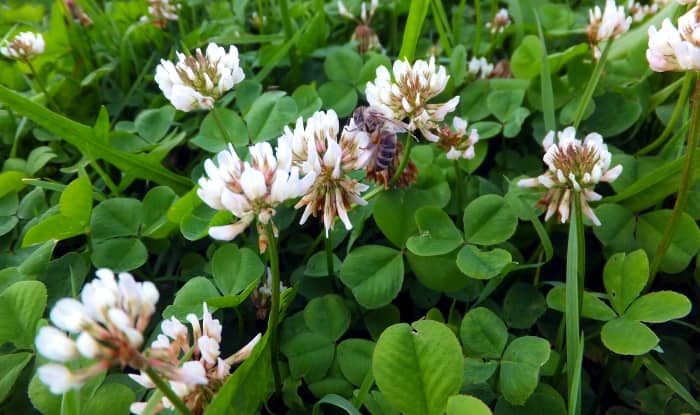

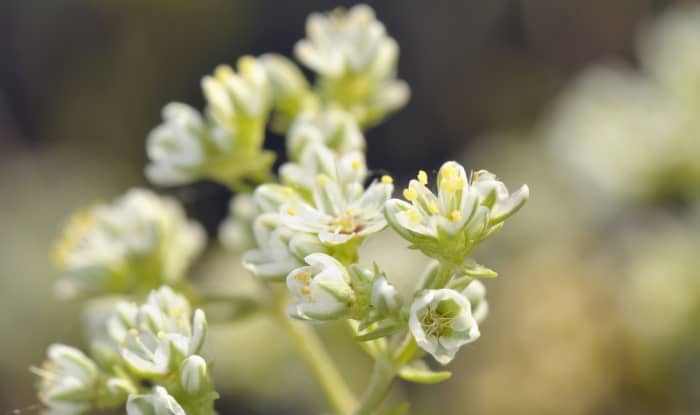
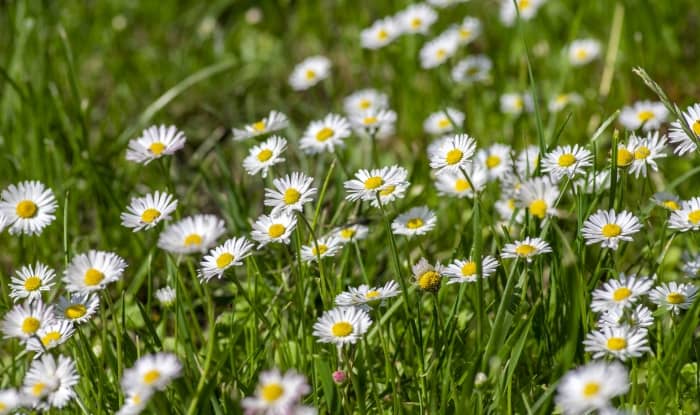


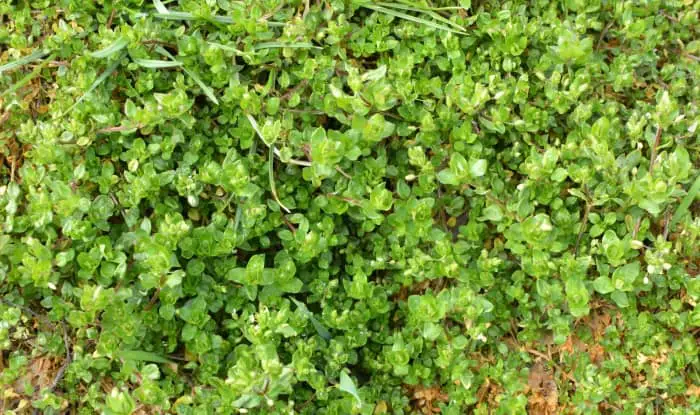





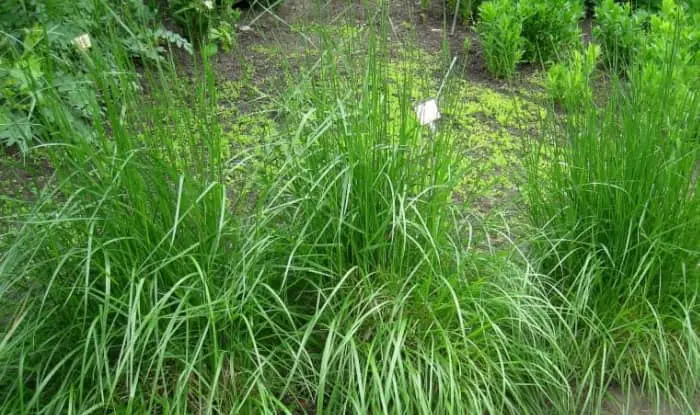

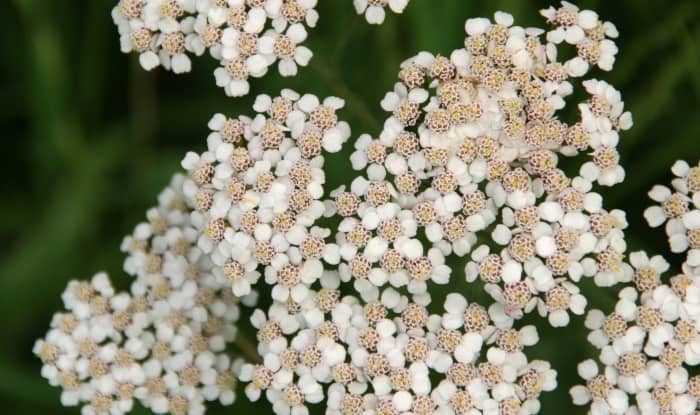
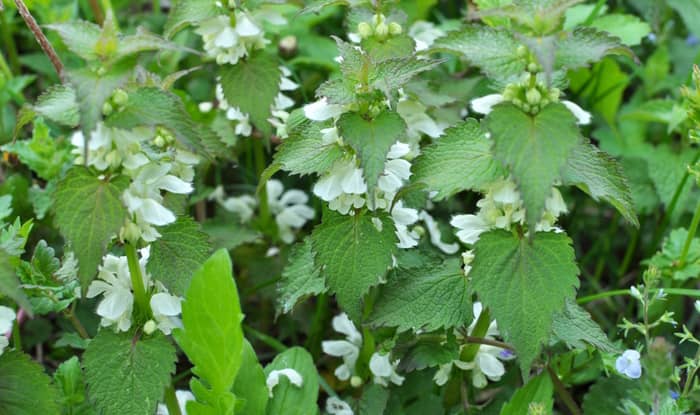
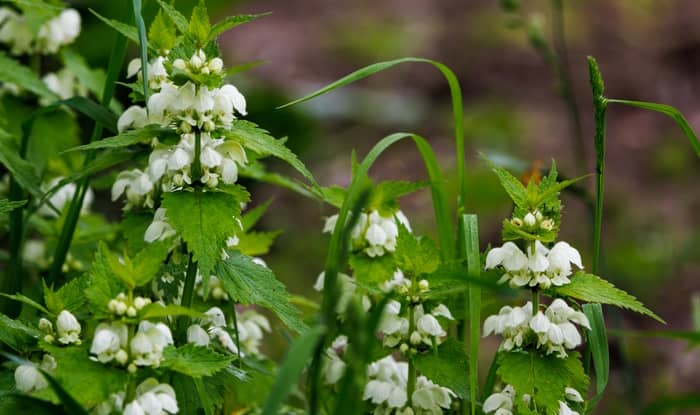
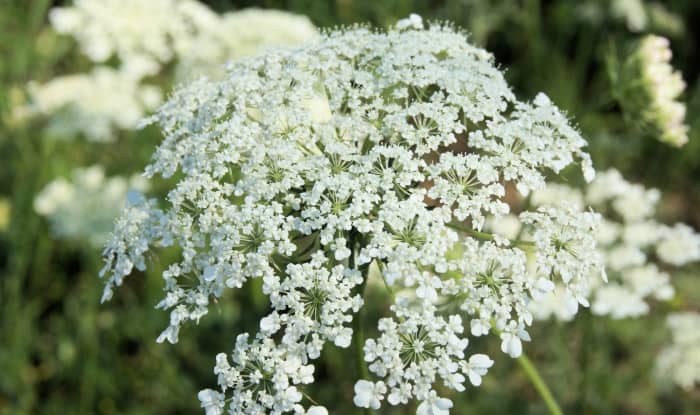
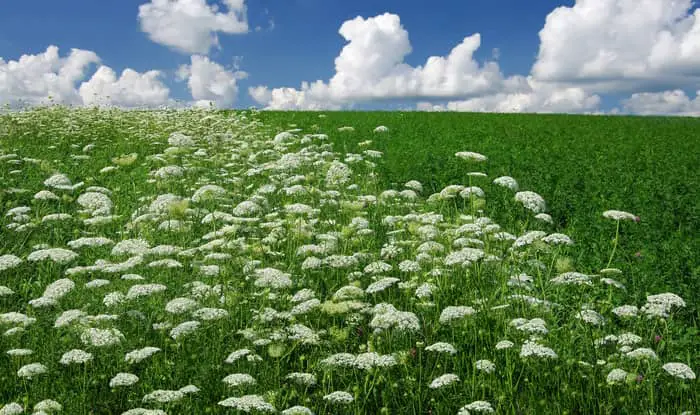
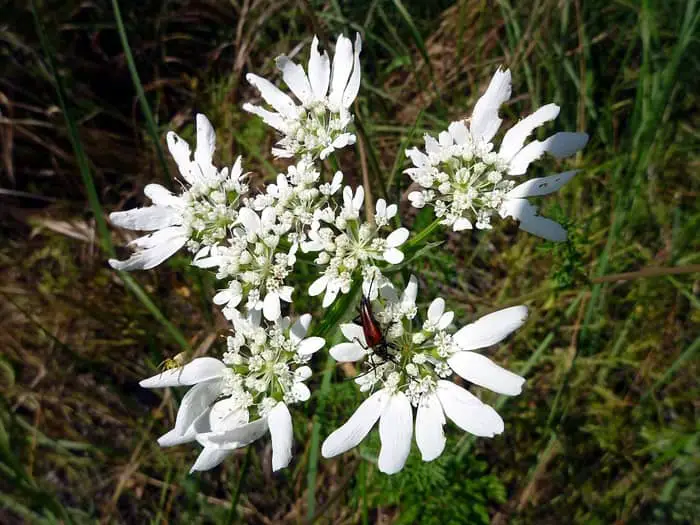
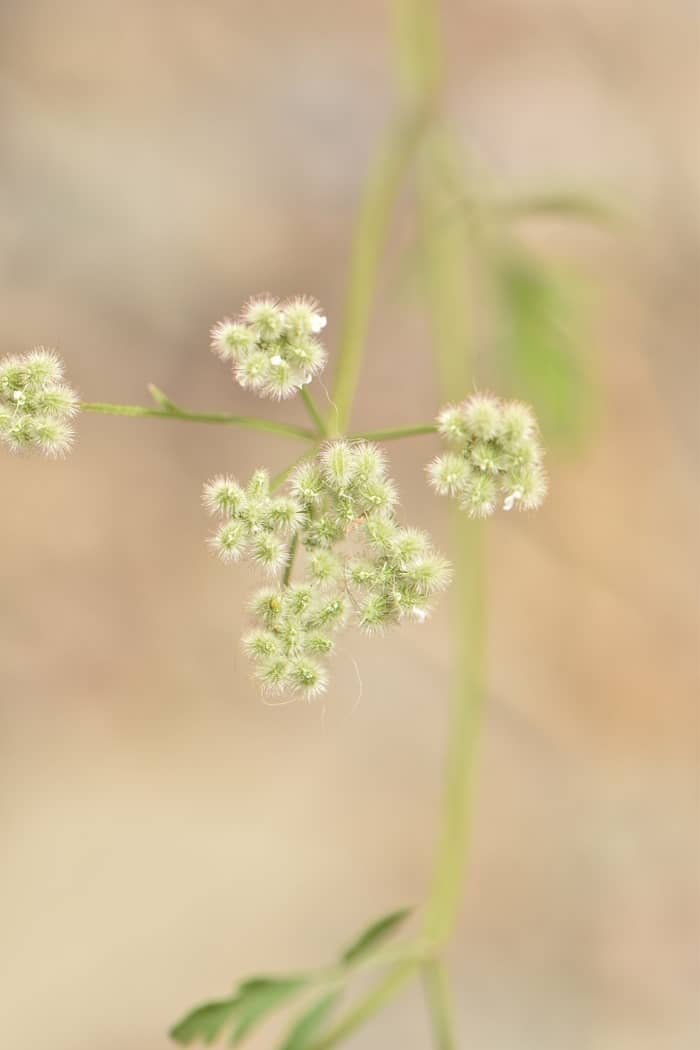
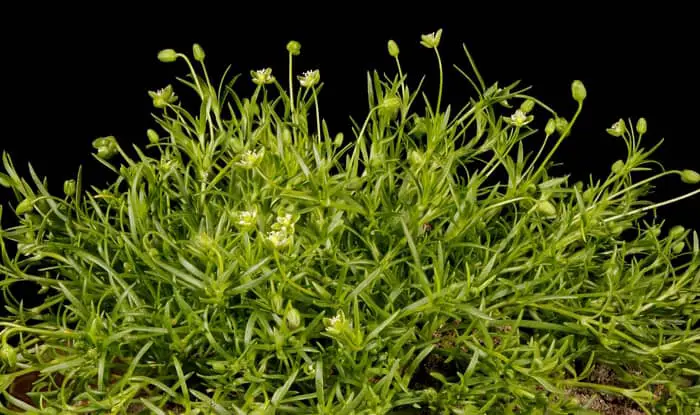

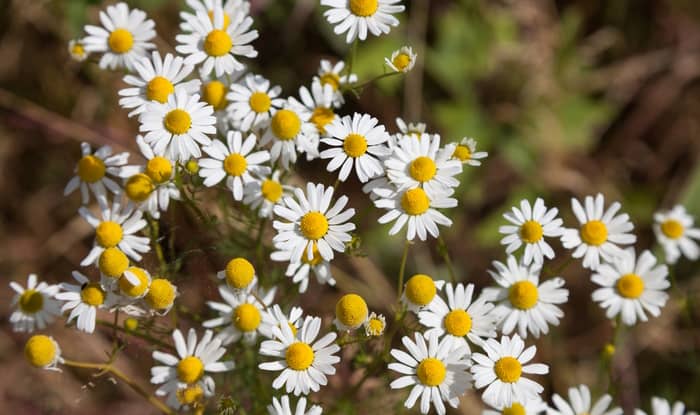

thank you for the great information.I think I have chickweed, It is all over
my lawn/ some are too hard for me at 75 to pull out of the ground/
I also live in a 55 & over and pay over $215. a month for fees. Never live in an hoa/ not worth it. every year they take more away from you, Our yard gets the worst care & I have spent so much money on grass seed
rocks & dirt. what a waste/ The wetland we live near are just washing
away my grass & all I now have is dirt & mud/I hate when they try try to
cut the lawn. All they are doing is ripping up my grass that I do have left.
What is the weed in the photo at the top of this post? It doesn’t look like any of the ones below it and it’s the weed I am trying to figure out what it is. Thanks
Hi Sarah, the weed in the featured image at the top of the article is chickweed. There are a number of different types of chickweed that you might want to investigate further.
I have a weed I can’t identify, they have tiny white flowers less than 1/4″ wide with about 10 petals and yellow center. There is a small cluster at end of stalk and leaves are in pairs. This is a small delicate plant, maybe 8″ tall, but it’s early yet , it may grow bigger.